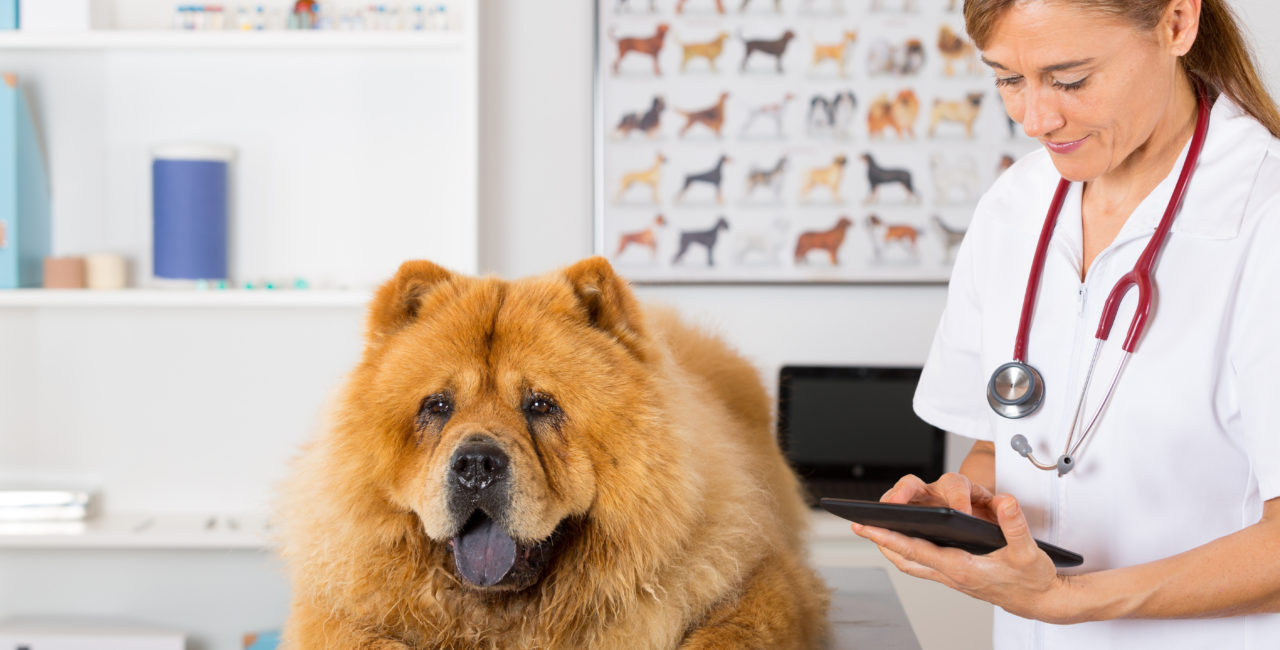There are two cruciate ligaments that hold together the knee joint making it a hinged joint. An ACL injury occurs when the anterior (or the ligament that is attached in the front of the knee) ruptures. Think of a door with two hinges, it will open and close with ease. Then think of a door if you remove one of those hinges. It makes the door wobbly.
Are there any predispositions for this condition?
Although this can occur with any breed, ACL tears are most common in young, athletic, large breed dogs, and older overweight large breed dogs. Dogs can have an acute tear which usually occurs while running or roughhousing which causes sudden lameness. Older, usually overweight, dogs can have ligaments that stretch that then tear partially or fully tear after as little as a small jump.
ACL Symptoms and Diagnosis
Dogs most commonly present to the clinic with non-weight bearing lameness of the affected hind leg. Your veterinarian will examine the leg and can diagnose a torn ACL by feeling the leg and performing 2 separate tests. Tibial drawer – where the doctor will stabilize the femur (top bone in leg) with one hand and moves the tibia (lower bone). If the ligament is ruptured the bones will move like a drawer. The doctor will also do a tibial compression which includes stabilizing the femur and flexing the hock. The tibia will move abnormally if the ligament is ruptured.
My dog has been diagnosed with a torn ACL, now what?
Although some dogs may do well with cage rest and medication (think small dogs) surgical correction is the preferred treatment. If not repaired dogs will experience wear between the bones, abnormal cartilage will form causing an unstable knee joint which will cause your pet pain and loss of movement in their knee.
Surgical procedure
There are a few different options for surgical repair.
Extracapsular repair where a large strong suture is placed to tighten the joint.
Tibial Tuberosity Advancement (TTA) which with the help of a titanium or steel “fork” changes the angle of the knee.
Tibial Plateau leveling osteotomy (TPLO) – Which involves making a cut in the tibia and using a plate and screws to adjust the angle of the knee.
The type of surgery recommended for your pet will be chosen based on the breed, size/weight of the dog and surgeon’s training/experience. Surgery is intensive and requires specialized equipment and training for staff. 1- 1 and 1/2 hour prep time and 1 1/2 – 2 hours to perform the surgical procedure then the recovery period. The patient will stay in hospital for 2-3 days post-op and receive pain medications frequently to make sure they remain comfortable.
What will the recovery period look like?
The post-op recovery period is very important for proper healing with frequent rechecks with your veterinarian. Dogs have to have restricted activity for a significant amount of time after surgery. 6-8 Weeks for a TPLO, TTA 4 months and extracapsular repair 8 weeks. Restricted activity means only going outside on a leash and not able to run or jump or play with other dogs and being confined to a small room or kennel when unsupervised. Physiotherapy exercises will be recommended by your veterinarian while they are recovering. Your dog will go home with multiple medications and a through medication schedule. X-rays will be taken to ensure proper healing of the surgery site.
What Surgeries are available here at Riverview?
Here at Riverview Animal Hospital we have 2 orthopedic surgeons and see on average 10-15 dogs with torn ACL’s/month. As stated, the type of surgery performed is determined by several factors. Most commonly we perform Tibial Plateau leveling osteotomy (TPLO) on our patients with torn cruciate but also do extracapsular repairs on patients who meet the requirements.
Written by: Kristen Smith, RVT




